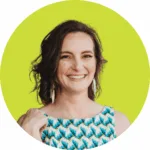Are you looking to implement engaging eLearning course strategies that boost retention rates and improve learner performance?
If so, you’re in the right place. This article is your one-stop guide to cutting-edge eLearning course development.
In this guide, we’ll explore nine effective activities that cater to a variety of training needs and diverse learning styles.
Our goal? To enable you to design eLearning courses that effectively combine quality content, knowledge transfer, and learner satisfaction.
From bite-sized learning modules and engaging storytelling techniques to personalized feedback mechanisms – each element has a part to play in transforming a traditional educational course into a successful learning experience.
Unlocking the potential of eLearning course design
eLearning course design is the art and science of creating online educational content that is not only informative but also engaging and accessible.
It encompasses more than the sum of its parts; it takes into account the presentation of information, interactions with learners, and how the learning journey unfolds through digital platforms.
With the digital revolution transforming education and training, eLearning has emerged as a pivotal component in today’s learning landscapes.
It’s an essential approach that addresses the evolving needs of educational institutions and corporate training environments.
Fundamentally, eLearning brings a multitude of benefits to the table, such as:
- Facilitating learning at any time and from any location, eliminating geographical barriers and time constraints.
- Flexibly catering to the learner’s pace and preferences.
- Providing cost-effectiveness, eliminating physical resources and disseminating learning broadly at a fraction of the traditional costs.
In fact, a study found that companies with comprehensive eLearning programs witnessed a 24% rise in profits.
However, navigating the eLearning landscape comes with its own set of challenges.
- Educators and instructional designers often grapple with keeping learners engaged amidst the mass of digital distractions.
- Another major challenge is ensuring meaningful learning and improving knowledge retention amidst an overwhelming amount of information.
- The process of transitioning from traditional face-to-face methods to crafting high-quality eLearning courses has its own unique hurdles.
To overcome these obstacles and unlock the full potential of eLearning, educators and instructional designers must continually hone their skills in eLearning course design, becoming adept at evolution in the digital learning landscape.
Effective eLearning ideas for your online course
Learners possess unique needs and learning styles, and so, we must traverse numerous effective and inventive eLearning ideas.
Let’s now dissect some core strategies that can help you create an energizing, engaging, and effective learning experience.
From mastering the art of storytelling and infusing media and interactivity to catering to diverse learning styles, identifying the nuances of accessibility, and understanding the construction of comprehensive assessments and feedback mechanisms, we have got you covered.
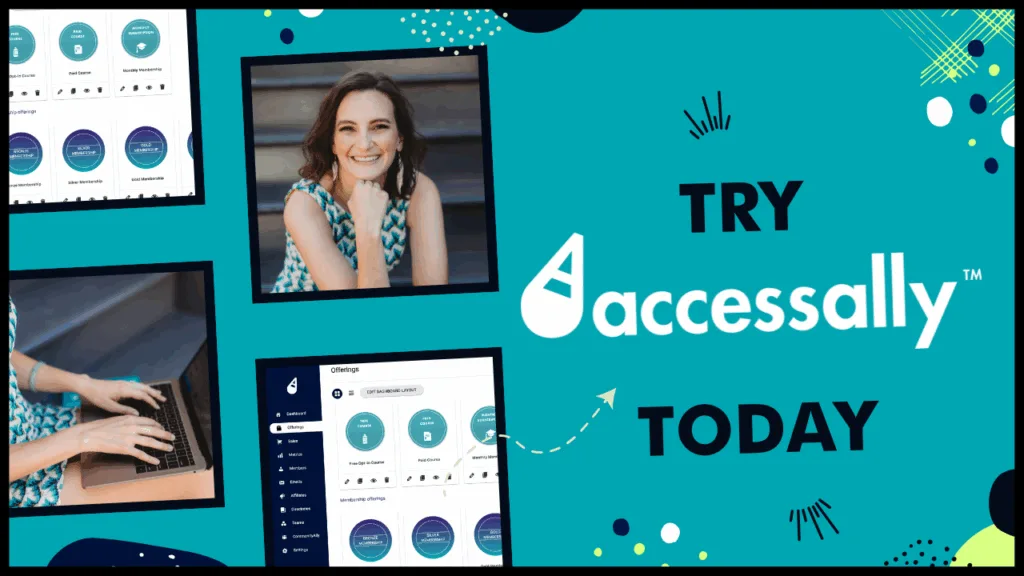

1. Effective onboarding experiences
The initial point of contact that learners interact with in an eLearning course is the onboarding process, a key determinant of the trajectory of their entire learning journey.
A well-structured onboarding experience is pivotal in driving learner engagement, bolstering retention, elevating overall satisfaction, and fostering brand advocacy.
If your business model involves monetizing your eLearning content, an impressive onboarding process can also boost revenue.
Practical examples of high-impact onboarding activities stretch across introductory videos, interactive tutorials, and quizzes.
An inspiring real-world example is the wellness membership site crafted by Melissa Ramos using the AccessAlly platform.


- Rather than granting instant access to members to view all content, visitors are directed to a quiz that ascertains the specific hormone issues they need assistance with.
- Upon completing the quiz, members receive tags aligning with their requirements, unlocking relevant sections of the membership site tailored to their needs.
This method has resulted in a drastic decrease in churn, dropping from 15% to a marginal 5%, underscoring a considerable increase in member retention.
2. Engaging storytelling techniques
Storytelling emerges as a formidable tool for framing complex concepts within relatable narratives and making content more engaging and easier for learners to digest.
Scenario-based learning is a distinctive application of storytelling within eLearning.
This approach introduces learners to real-world situations or challenges, kindling their decision-making capabilities and endorsing active participation.
By facilitating the application of knowledge in an authentic context, scenario-based learning fosters comprehensive understanding and solidifies retention of content.
Scenario-based learning can take various forms, including case studies, role plays, simulations, and even ‘choose your own adventure’ scenarios.
For instance, let’s consider a situation where the learner arrives at a branching scenario and must make a decision for the story to progress. These decisions can be applied to real-world scenarios to provide realistic and relatable learning experiences.
AccessAlly offers such a ‘choose your own adventure’ feature to integrate storytelling with dynamic aspects of gamification seamlessly.
3. Bite-sized learning modules (Microlearning)
The digital age has shaped how we consume information. Learners, now more than ever, crave brevity and directness in content, creating a demand for what is now termed ‘microlearning’.
Microlearning is when you deliver concise, highly targeted educational content in compact, manageable units. This quick, focused content is increasingly becoming the cornerstone of efficient eLearning experiences.
Several studies confirm the efficacy of microlearning in elevating knowledge retention and driving learner engagement. It encompasses small, targeted lessons that are easy to consume, matching the on-the-go lifestyle of today’s learners.
It places a spotlight on the essentials, cutting through the clutter of unnecessary information. For example, think of how microlearning is effectively used in the language learning app Duolingo.
The interesting part is that this technique is not limited to external education. Companies like Pfizer, Microsoft, and IBM have also utilized microlearning for their internal training modules, testifying to its wide application.
Develop your own bite-sized learning modules with diverse features supported by AccessAlly’s course builder, such as short instructional videos, lightning-fast quizzes, or quick-reference flashcards.
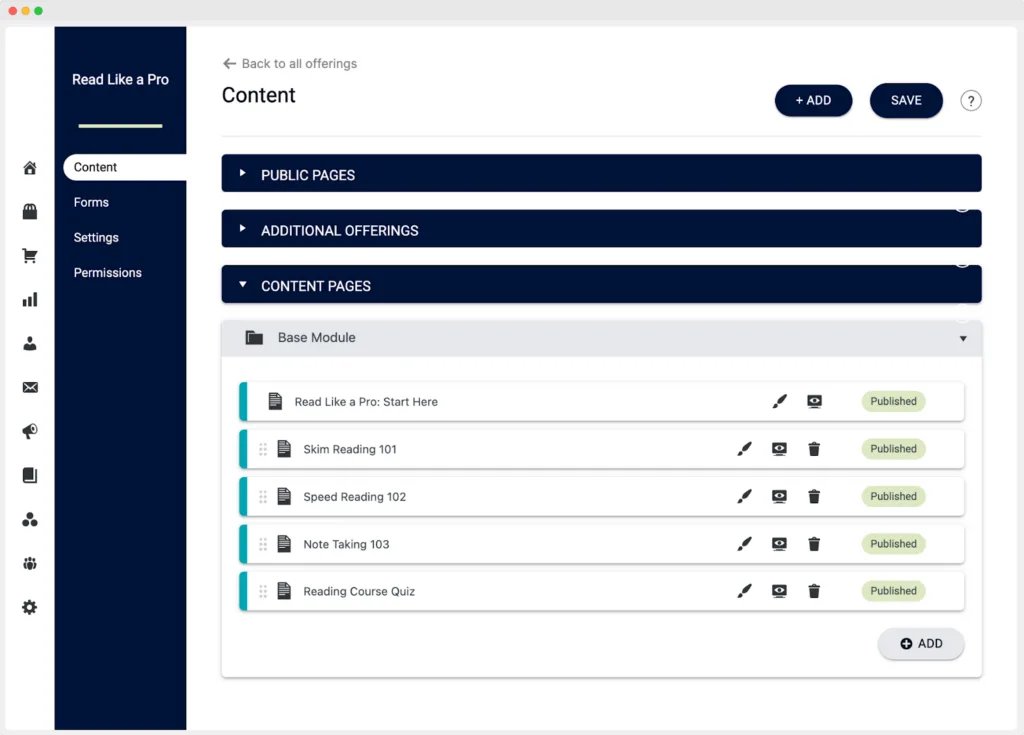

4. Creating effective video content
Video content is a staple in modern eLearning, playing a significant role in cultivating understanding and securing learner engagement.
A recent video-in-education study found that 93% of educators believe videos notably boost the eLearning experience, and 88% suggest they amplify learner achievement levels.
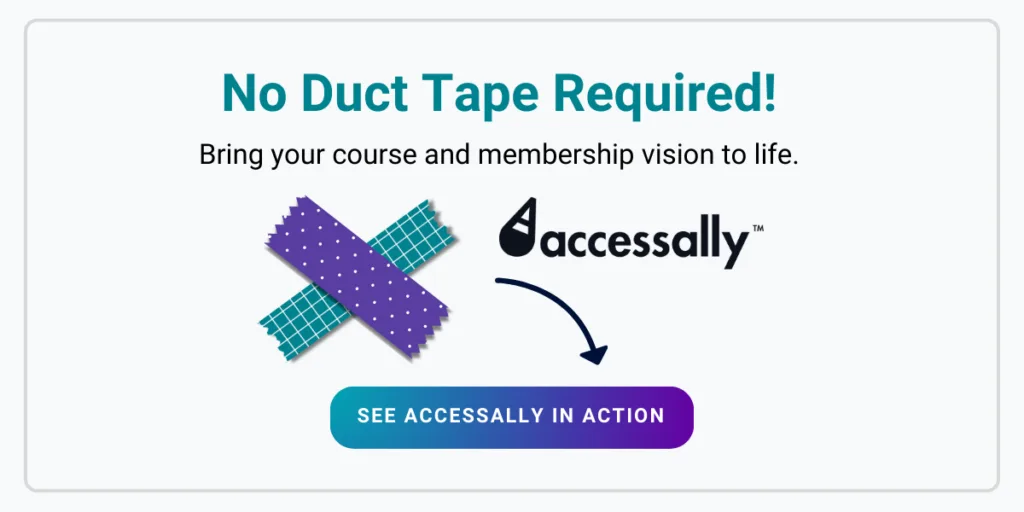

Creating quality video content need not break the bank. Keep it engaging and direct, even when working with a slim budget. Simple strategies for budget-friendly yet impactful video content can range from DIY smartphone videos to leveraging free online resources.
For premium content involving scriptwriting and professional presenters, costs can reach up to $50,000, but this large-scale production isn’t always necessary.
AccessAlly boosts video content delivery with a feature called video bookmarks. This tool helps track learners’ progress as they course through the video content, thus providing valuable insight into learners’ engagement throughout the duration.
5. Incorporating compelling visuals
Visuals in eLearning serve multiple roles. They can help in:
- Aiding comprehension and knowledge retention.
- Boosting learner engagement.
- Improving clarity in concept absorption.
Powerful visuals, spanning infographics, diagrams, and animations, can rejuvenate a bland course, transforming it into an interactive knowledge journey.
Visuals also motivate learners. For instance, using visual progress bars, achievement badges, and other similar illustrations can skyrocket learner interest and progress.
With AccessAlly’s course builder, you have a suite of tools at your disposal, ready to instruct and inspire.
It simplifies visuals’ incorporation into eLearning courses, from adding appealing images to implementing motivational progress-tracking graphics such as progress bars and pie charts.


6. Gamifying your eLearning content
One way to captivate learners and amp up their motivation in an eLearning course is through gamification.
This technique, which involves the integration of game-design elements into non-game settings, has been proven to impact learning significantly.
Research has shown that the introduction of gamified elements into training brings a notable surge in learner motivation.
In fact, up to 83% of users undertaking gamified training experience heightened motivation compared to just 61% who go through non-gamified learning.
In the diverse realm of eLearning, gamification can take many shapes and forms.
Beyond redeemable points earned upon task completion, other facets include achievement badges rewarded for reaching learning milestones, leaderboards encouraging healthy competition, and levels or stages that learners can advance through as they master different areas.
An illustration of gamification’s effectiveness can be seen in Sales Insights Lab’s use of AccessAlly.
They leveraged gamified elements such as progress tracking and quizzing in their training programs, which met with a positive response from their learners. Such a strategic move played a key role in their ability to triple their membership.
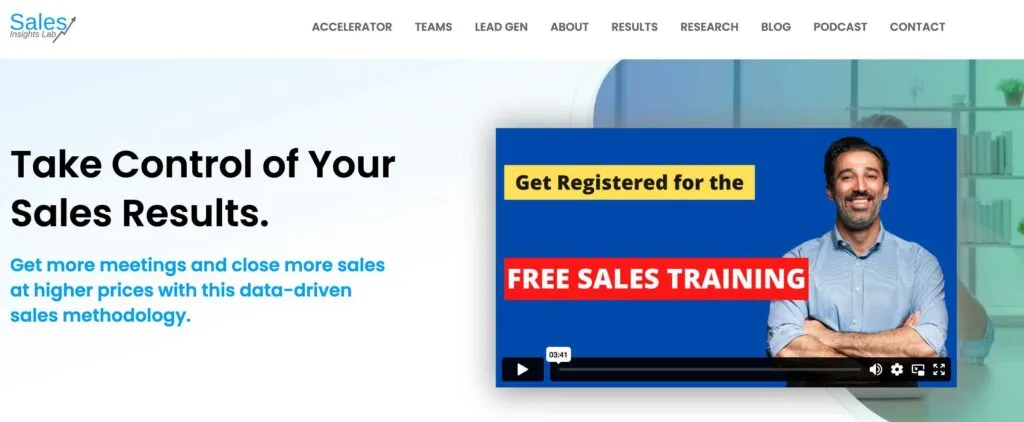

With the help of tools like AccessAlly’s course builder, incorporating these boundlessly creative and motivational gamification features into eLearning courses can become a remarkably simple process.
7. Personalizing feedback
Feedback that is directly applicable to learners’ work makes them feel valued and understood, which in turn improves their academic understanding, boosts their motivation, and ultimately optimizes learner performance.
Automated feedback is a perfect example of this personalized approach.
Systems that track learner performance in real-time during quizzes can help identify their strengths and areas that need improvement.
In addition, instructors can also provide one-to-one feedback to assist learners in gaining a more profound understanding of the subject matter.
However, it’s not enough to just offer feedback to learners; gathering their feedback on the eLearning content is equally necessary for course improvement.
Feedback from learners can be collected in a variety of ways, including through email surveys.
Leveraging this feedback allows course creators to optimize and amplify their training modules to align with learners’ needs and preferences.
Tools like AccessAlly make the process of providing personalized feedback incredibly straightforward. With features such as private notes in the coaching portal and real-time feedback on graded quizzes, learners can enjoy a tailored and motivating learning experience.


8. Promoting learner discussions
Learner discussions stimulate conversations, helping learners delve deeper into the subject matter, clarify doubts, exchange viewpoints, and assimilate knowledge from peer experiences, thereby enriching their overall learning.
In addition, discussion forums and group projects can hone learners’ collaborative skills, mirroring a real-world work environment.
For example, Ma Yoga®, a membership website for mothers, brilliantly integrated AccessAlly to embed a community forum within its member ecosystem.
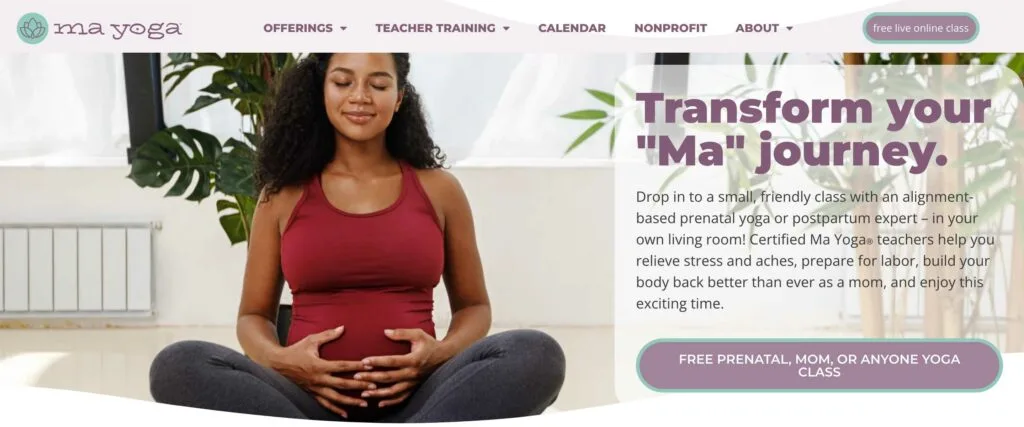

Using different membership tiers – paid and free – to access both public and private forums, the website built a thriving community where members could interact with ease, fostering connections and mutual support.
The best part? It achieved all of this without the need for any external third-party social networking platforms.
9. Motivating learners through progression tracking
Keeping an account of learners’ journeys instills a sense of achievement, serving as an ongoing motivator.
It also spikes learner engagement, keeping them invested in the course and curious about upcoming chapters. Methods such as progress bars, achievement badges, or certificates are classic examples of progression tracking.
They boost learner morale, acting as visible tokens of their accomplishment. Moreover, they subtly stimulate learners to maintain momentum, nurturing a steady habit of learning.
When it comes to motivating learners using progression tracking, AccessAlly is a handy tool. For instance, you can:
- Share new content with the learner only when they complete a task, such as clearing a quiz.
- Follow up automatically when a student does not complete a module, which promotes learner accountability.
- Create unique elements for progression tracking, such as progress bars and pie charts, to amplify the visual aspects.
This adds a fun twist to tracking progress, making it more engaging for learners.
Enhancing learner engagement and knowledge retention with AccessAlly
Considering all the strategies we’ve discussed, one effective approach for implementing these with tech-savvy precision and efficiency is by using a comprehensive eLearning platform such as AccessAlly.
AccessAlly is a comprehensive eLearning tool that empowers course creators, educators, and business influencers alike. It boasts an array of impressive features, such as:
- A flexible course builder that enables you to tailor varied learning modules.
- Progress tracking features that empower learners with insight into their journey, fostering continuous improvement.
- Personalized automation tools that can free up your time from manual effort.
- A convenient migration process with seamless integration capabilities if you are transitioning from another platform.
Several features of AccessAlly are designed specifically to improve learner engagement.
- Personalized onboarding experiences are created for every entrant, setting a welcoming tone.
- AccessAlly allows the integration of scenario-based learning activities, demonstrating how theoretical knowledge can be applied in practical scenarios, thus promoting learner engagement.
- Gamification elements can be added to your content, making the learning process interactive and fun.
- Learner discussions facilitated by CommunityAlly promote active learning and enthusiasm among learners.
From the learner engagement perspective, AccessAlly incorporates extensive features that bolster knowledge retention.
- The platform supports the creation of bite-sized learning modules, making information consumption and comprehension manageable.
- It enables the creation and integration of effective video content that supplements text-based knowledge with an audio-visual layer, helping learners retain information.
- AccessAlly also allows the addition of compelling visuals to your content, simplifying complex concepts.
- Its ability to provide personalized feedback can boost learners’ understanding by empowering instructors to evaluate their performance and provide timely responses.
Adopting AccessAlly for eLearning course design empowers you with an efficient, learner-centric digital toolkit.
Each of its features can be customized to target multiple facets of eLearning needs – from engagement to information retention, helping educators confront modern eLearning challenges with effective solutions.
Take your eLearning course design to the next level with AccessAlly
We’ve explored the potential of eLearning, delved into diverse strategies for learner engagement and retention, and identified ways to cater to every learning type, meeting various instructional needs.
Throughout this exploration, AccessAlly emerges as a common factor and a powerhouse in the realm of eLearning course design.
A flexible and intuitive platform, it can easily bring eLearning content to life, making it the go-to solution for instructional designers, educators, and professionals keen on delivering an efficient and enjoyable course creation experience.
With AccessAlly, you are primed to elevate your eLearning design process, boost adaptability to different learning styles and preferences, and add an enjoyable element to the educational journey.
So, don’t wait. Harness the power of AccessAlly, unlock new possibilities in eLearning course design, and take your eLearning programs to soaring heights!
